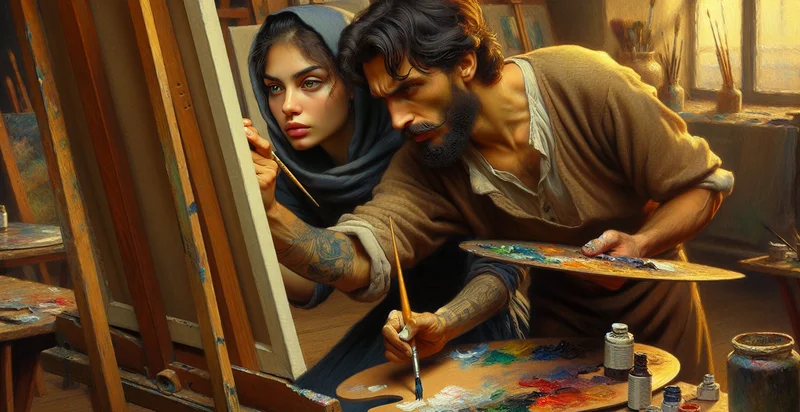Identify gender of painter
using AI
Below is a free classifier to identify gender of painter. Just upload your image, and our AI will predict if the painter is male or female - in just seconds.

Contact us for API access
Or, use Nyckel to build highly-accurate custom classifiers in just minutes. No PhD required.
Get started
import nyckel
credentials = nyckel.Credentials("YOUR_CLIENT_ID", "YOUR_CLIENT_SECRET")
nyckel.invoke("gender-of-painter", "your_image_url", credentials)
fetch('https://www.nyckel.com/v1/functions/gender-of-painter/invoke', {
method: 'POST',
headers: {
'Authorization': 'Bearer ' + 'YOUR_BEARER_TOKEN',
'Content-Type': 'application/json',
},
body: JSON.stringify(
{"data": "your_image_url"}
)
})
.then(response => response.json())
.then(data => console.log(data));
curl -X POST \
-H "Content-Type: application/json" \
-H "Authorization: Bearer YOUR_BEARER_TOKEN" \
-d '{"data": "your_image_url"}' \
https://www.nyckel.com/v1/functions/gender-of-painter/invoke
How this classifier works
To start, upload your image. Our AI tool will then predict if the painter is male or female.
This pretrained image model uses a Nyckel-created dataset and has 2 labels, including Female and Male.
We'll also show a confidence score (the higher the number, the more confident the AI model is around if the painter is male or female).
Whether you're just curious or building gender of painter detection into your application, we hope our classifier proves helpful.
Related Classifiers
Need to identify gender of painter at scale?
Get API or Zapier access to this classifier for free. It's perfect for:
- Art Market Analysis: Art galleries and market analysts can use the 'gender of painter' identifier to analyze trends in the art market. By understanding the gender distribution of artists within specific periods or styles, stakeholders can tailor their exhibitions and marketing strategies accordingly.
- Curated Exhibitions: Museums and cultural institutions can leverage this function to curate exhibitions that highlight underrepresented genders in the art world. By identifying male and female artists proportionately, curators can create balanced showcases that foster diversity and inclusion.
- Art Education Programs: Educational institutions can utilize the gender identifier in developing art history curriculum and programs. By incorporating data on the representation of male and female artists, educators can promote discussions around gender equity in the arts.
- Historical Research: Researchers and historians can apply the 'gender of painter' identifier to analyze historical patterns in art production and gender representation. This analysis can lead to a better understanding of societal roles and cultural shifts over time.
- Social Media Engagement: Art platforms and social media channels can use this function to engage audiences with content that focuses on gender dynamics in the art world. Curating posts and articles based on artist gender can stimulate discussions among followers and enhance community interaction.
- Grant and Funding Allocation: Art organizations can use gender identification to make informed decisions when allocating grants or funding opportunities. By analyzing gender representation, they can aim to support a more diverse range of artists, promoting equity within the arts sector.
- Artistic Career Development: Mentorship programs and coaching services for artists can benefit from identifying trends in gender representation among painters. This insight can help them tailor support and resources to emerging female or male artists, addressing any gaps in guidance or support.


